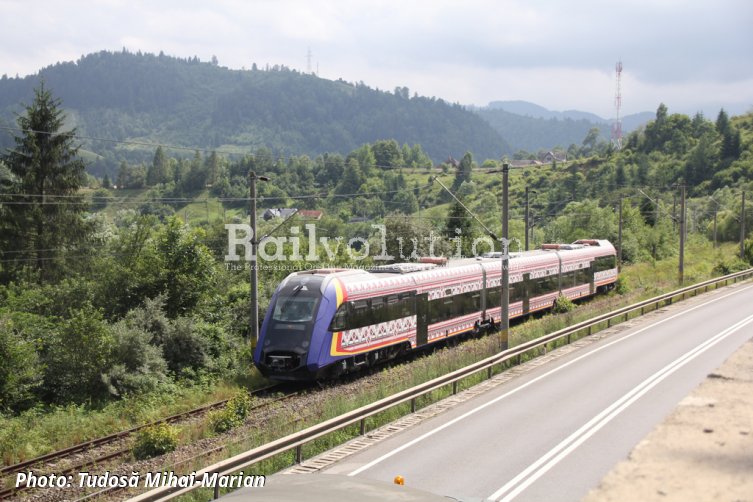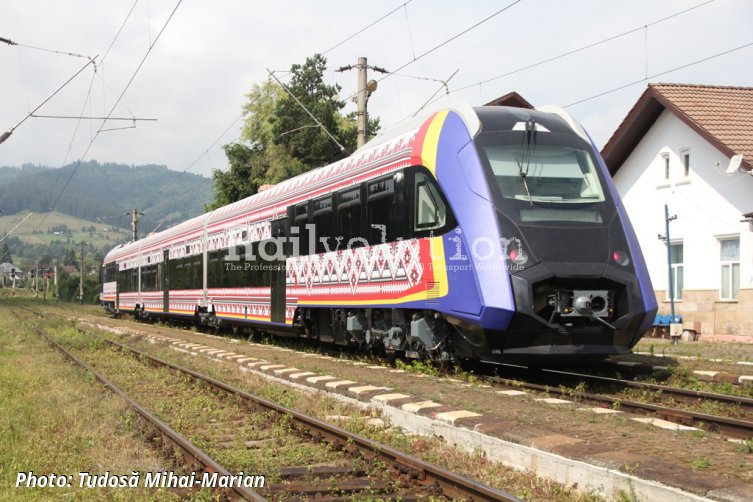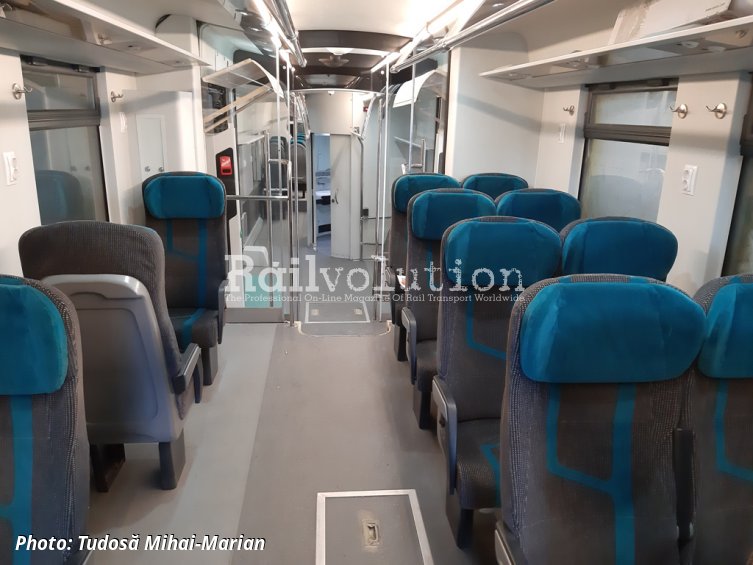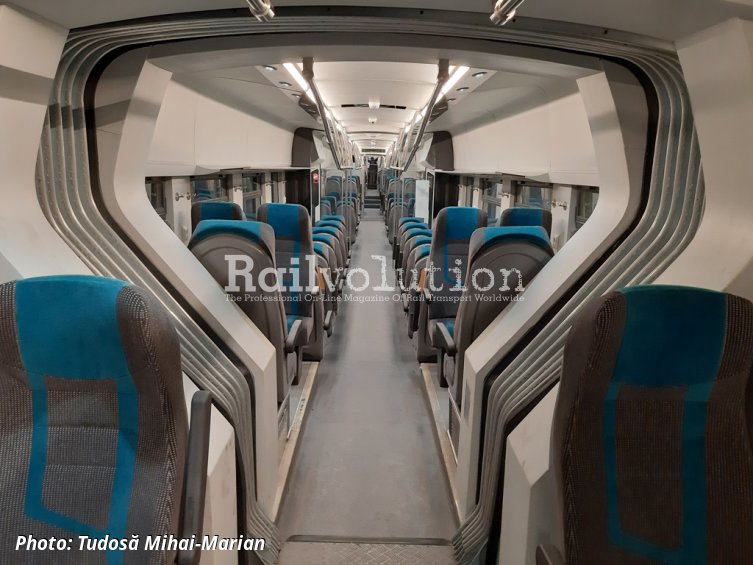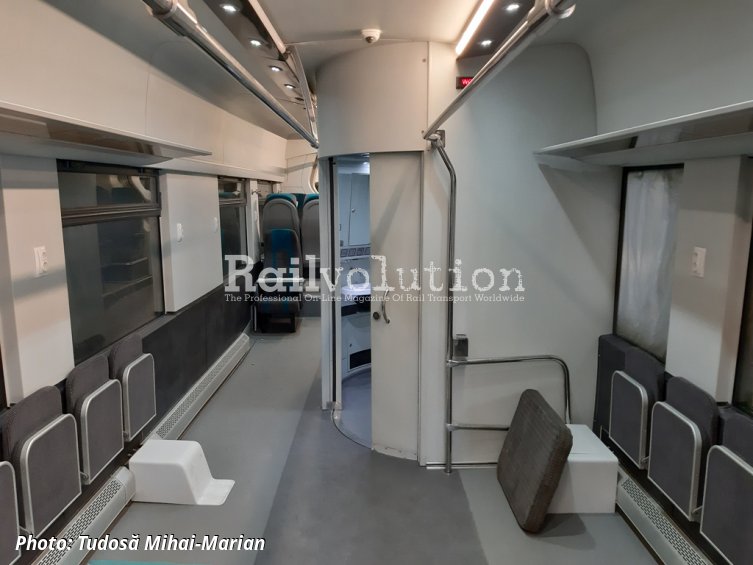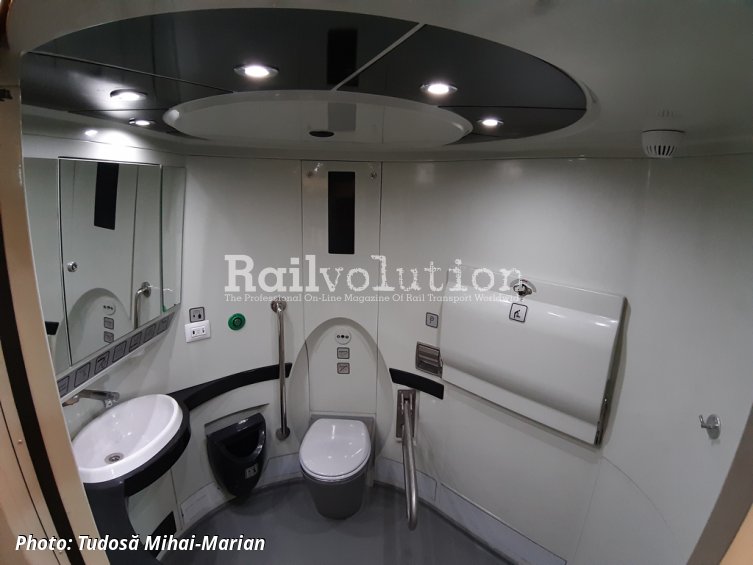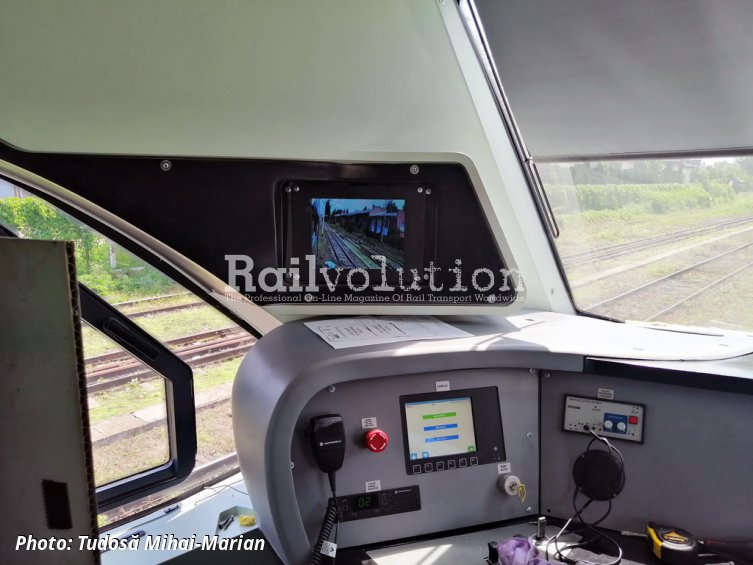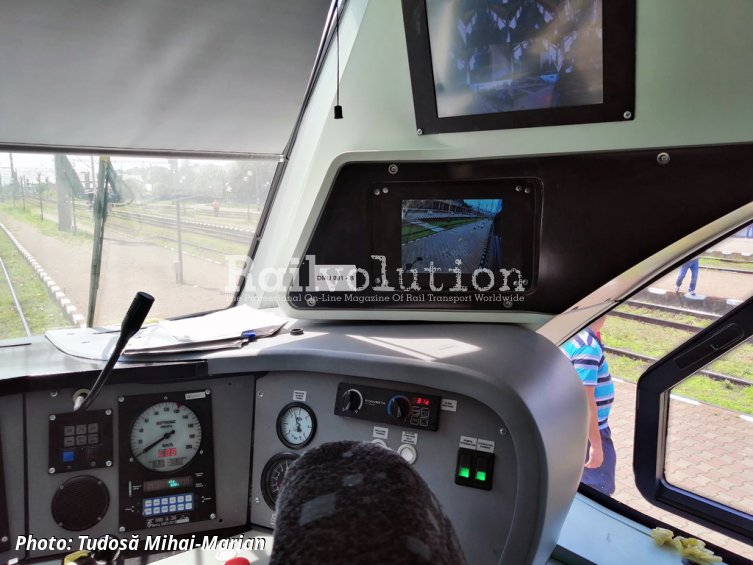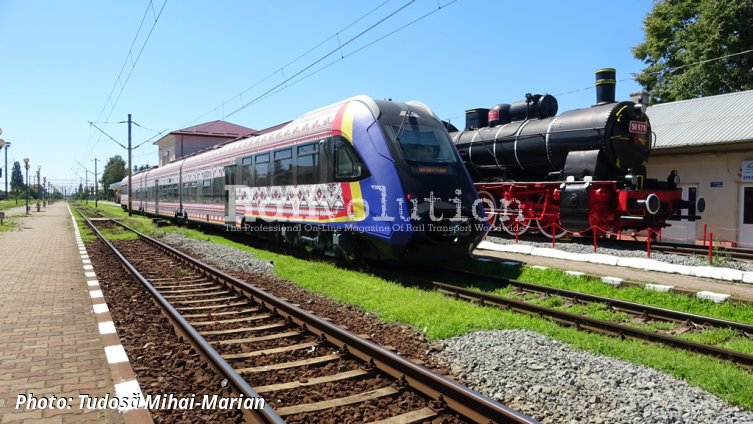Electroputere VFU Tests Its DMU-01
posted on 19th Aug 2020 08:50
In October 2019, at Făurei Railway test centre a new three-car DMU with a hydraulic transmission arrived there, being painted in a temporary black and white colours. Designated DMU-01 it was built by Electroputere VFU of Pașcani (former REMAR), a Grampet Group company, based on its own engineering, personnel, equipment and finance.
The 120 km/h train is fitted with state-of-the-art components from established suppliers such as MTU, ZF, Medcom, Knorr-Bremse, Konvekta, Ultimate, Voith (front end and inter-car couplings), Hübner, GMT (metal-rubber components of powered and non-powered bogies), Axtone, Hoppecke, Rawag (windows), FISA (passenger seats), Lucchini (wheelsets), as well as from Romanian companies like VRG of Bistrița (the driver’s cabs, including consoles, and interior design), Tehmin of Brașov (PIS components) and Softronic Craiova (Indusi ATP, speedometer and speed sensors).
The DMU-01 project was launched in 2011. However, the idea of building a train designed for the short and medium distance traffic came true in 2019 when the prototype was moved from Pașcani to Făurei for dynamic tests. The DMU-01 has a B’ 2’ 2’ B’ axle arrangement, is 60 m long over couplings, and has A and B end motor cars and C intermediate trailer.
Two Powerpacks with a 390 kW MTU 6H 1800 R85L diesel engine and a ZF EcoLife 6 AP 2000 R gearbox are fitted. They are linked to the bogies and transmit their power to the ZF-built axleboxes. The principal parameters like traction forces, weights, and suchlike, are still to be determined following tests. A maximum axle-load is 20 t and the train weight is around 117 t when empty. Levels of Adblue, engine oil and fuel as well as toilet water and waste are easily checked on the gauges situated on the bodyshell sides.
The carbon steel bodyshells were designed to meet the EN 12663 and EN 15227 safety standard requirements and each front end is fitted with two Axtone shock absorbers together with Voith Scharfenberg Type 10 automatic couplings. The bogies built at Electroputere VFU were subject of fatigue test at IMA Dresden (non-powered bogies) and INMA Bucharest (powered bogies), the latter being the Romanian National Institute of R&D for Machines and Installations Designed for Agriculture and Food Industry.
The bodyshells of the A, B and C car are identically around 20 m long. The powered bogies have a 2,500 mm wheelbase, the non-powered ones that of 2,900 mm. The distance between bogie centres is 17,000 mm (A to B to C). DMU-01 is equipped with Knorr-Bremse brake system using the EP-Compact modules. The disc brakes fitted on each wheel have a 710 mm diameter. The brake in each bogie is controlled by an EP-Compact module which communicates with two central brake control units mounted in the electrical cabinets behind the driver’s cabs.
The three-car train has 164 seats in total, of these 130 fixed seats in second class in a 2 + 2 arrangement: there are 56 seats in the intermediate C car, 65 seats in the B end car and nine seats in the A end car. In the latter there are also 22 first class seats in a 2 + 1 arrangement, together with 12 second class tip-up seats and two wheelchair harness points in a multifunction area. There is also a wheelchair-accessible WC cubicle, with a table for changing of baby nappies, a hand dryer and a 230 V socket. In the A car there is also a stowage for large luggage and bikes. The two entrance doors are fitted with foldable ramps for persons with reduced mobility.
Each car is fitted with a roof-mounted HVAC unit supplied by Konvekta. The train is equipped with a WiFi, CCTV (with displays on the driver’s console) and passenger counters on each entrance door. Fire detection system with sensors mounted in the electrical cabinets, interior and driver’s cabs alarms the driver by way of visual and audio signals. Emergency passenger-to-driver intercom modules are installed near of the all six entrance doors, the latter being supplied by Ultimate. The B motor car features also a standard-sized WC cubicle. The vacuum retention WC systems, together with fresh water tanks, were supplied by Electroputere VFU.
The 230 V sockets for phones or laptops are fitted at each seat unit. The route displays are mounted in each car near the entrance doors and on the driver’s cab rear wall, while each sidewall of the train have four information panels. Stainless steel handrails and glass partitions together with LED spots and linear LED bars provide a bright and friendly interior feeling. First class area is fitted with individual lights for reading. Hübner inter-car gangways which meet the latest noise and fire standards are fitted.
The train control and management system (TCMS) was provided by Medcom of Warszawa and EC Engineering of Kraków. The air-conditioned cabs are fitted with an ergonomic driver’s seat situated symetrically alongside the train longitudinal axis, with an additional tip-up seat on the left for a secondman. The left- and right-hand screens on the driver’s console show the lateral views along the train, while the interior CCTV footage is displayed on a 17inch monitor on the right. The driver can adjust its own HVAC climate control, as well as for the passenger’s interior. A fridge device is mounted for keeping foods or drinks consumable for the driver.
The DMU-01 prototype is now on test in Romania. It was built on the Electroputere VFU’s own cost, and there is no order for this type at present. The manufacturer hopes to finish its authorisation until late 2020 and then it will be offered for hire to various operators either in Romania or abroad.
The factory in Pașcani has a 150 year tradition in building the rolling stock, this facility being established to offer maintenance and repair services for vehicles used on the Suceava - Roman route since 1869. After the REMAR works privatisation in 2004 by Grup Feroviar Român there was introduced a restructuring plan which led to the company "rebirth" as well as its subsequent modernisation. Given that in 2013 Grampet Group had acquired Electroputere Craiova locomotive production brand, REMAR Pașcani became Electroputere VFU (Vehicule Feroviare și Urbane - Urban and Rolling Stock Vehicles).
Written by Tudosă Mihai-Marian

